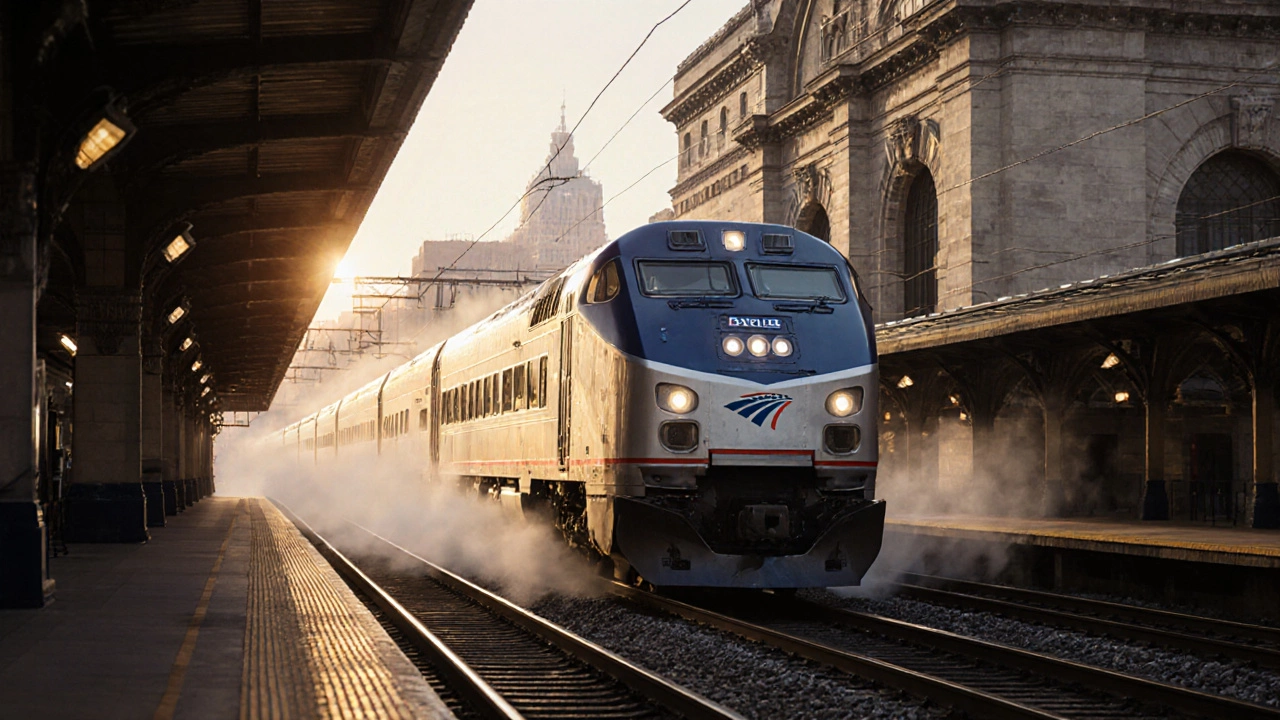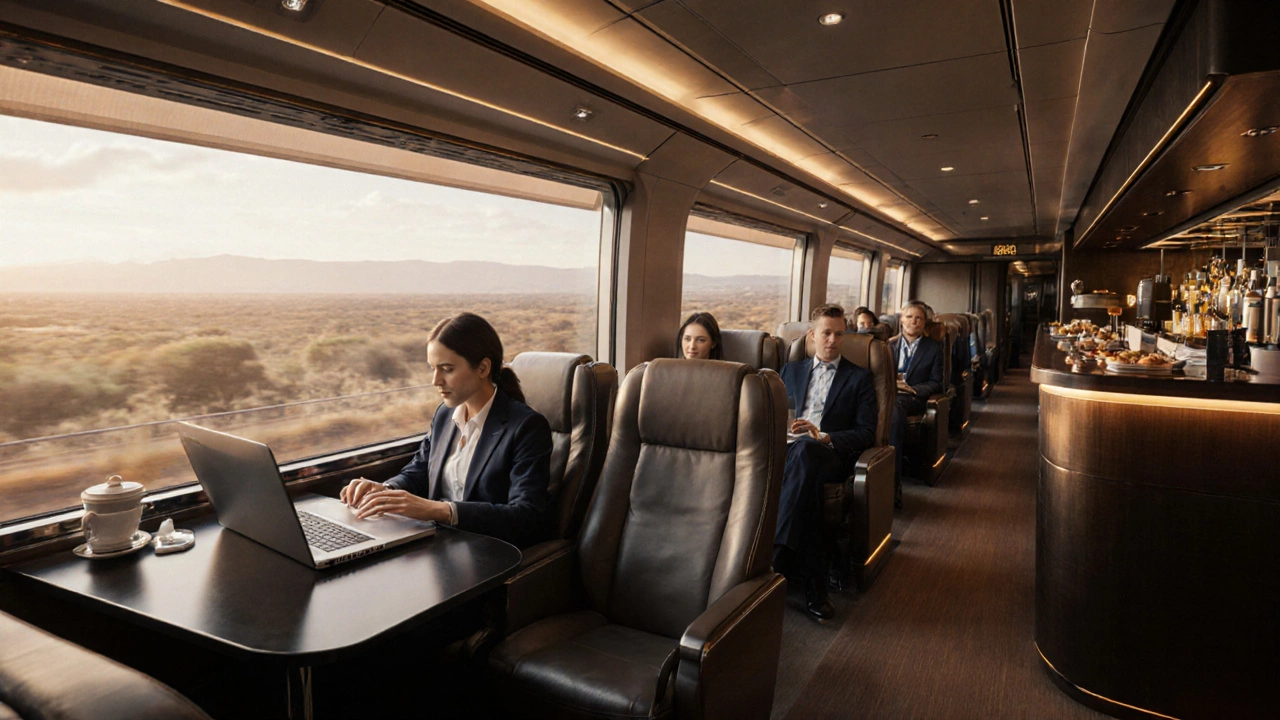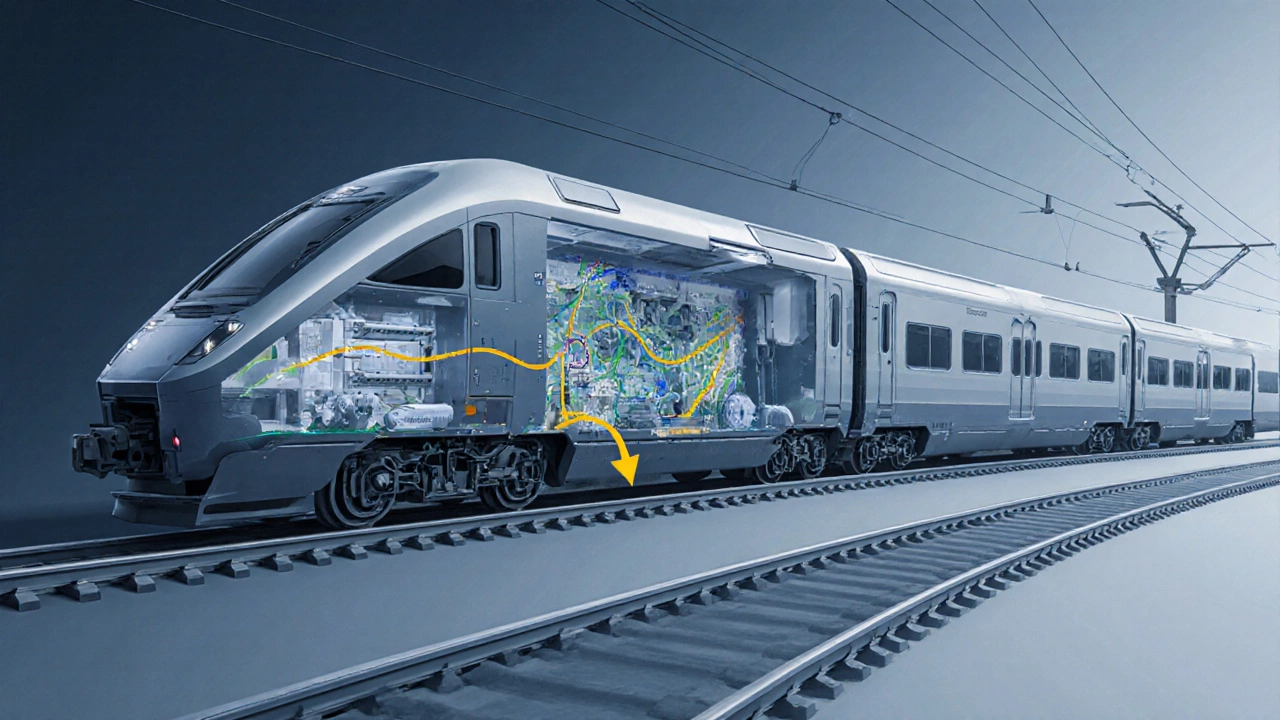The Most Advanced Train in the US: Inside Amtrak’s Avelia Liberty (2025)

- Oct, 13 2025
- 0 Comments
- Aaron Blackwood
Train Travel Time Calculator
Calculate Your Travel Time
Travel Time Results
Enter your travel details to see estimated travel time
Pro Tip: The Avelia Liberty is designed for the Northeast Corridor and can maintain higher speeds on curved tracks with its active tilting system, saving up to 15 minutes on the New York-Washington route.
When you hear the question “what is the most advanced train in the US?”, the answer isn’t a nostalgic steam locomotive or a refurbished commuter car. It’s a sleek, purpose‑built high‑speed train that started pulling into New York’s Penn Station this spring. Meet Avelia Liberty, Amtrak’s brand‑new trainset that brings European‑grade speed, comfort and technology to the Northeast Corridor.
Key Takeaways
- The Avelia Liberty, built by Alstom, is the first true high‑speed train to operate in regular revenue service in the United States.
- It can cruise at 125mph (200km/h) on existing tracks, with a design top speed of 186mph (300km/h) for future upgrades.
- Passengers enjoy Wi‑Fi 2Gbps, spacious seating, digital ticketing, and real‑time cabin climate control.
- Compared with the older Acela Express and Florida’s Brightline, the Avelia Liberty offers faster acceleration, lower noise, and a longer service life.
- The train is a testbed for the United States’ broader high‑speed rail ambitions, influencing projects in California, Texas and the Midwest.
What Is the Avelia Liberty?
Avelia Liberty is a high‑speed electric multiple‑unit (EMU) built by Alstom for Amtrak. Designed specifically for the Northeast Corridor (NEC), the train combines a lightweight aluminium carbody, distributed traction motors and a tilting system that lets it negotiate the corridor’s tight curves at higher speeds without sacrificing passenger comfort.
Its name reflects the train’s intended role: a “Liberty”‑focused service that frees travelers from the constraints of older equipment while showcasing American engineering partnerships.
Technical Specs at a Glance
| Attribute | Value |
|---|---|
| Top Operating Speed | 125mph (200km/h) on existing NEC tracks |
| Design Top Speed | 186mph (300km/h) - future‑ready |
| Power Source | 25kV 60Hz AC overhead catenary |
| Tractive Effort | 7,000kN total |
| Seating Capacity | 462 passengers (incl. 30 business class) |
| Wi‑Fi Bandwidth | Up to 2Gbps shared |
| Noise Level | 68dB interior at 125mph |
The train’s distributed propulsion means each car has its own motor, delivering smoother acceleration and redundancy-if one motor fails, the others keep the train moving.

How It Stacks Up Against Other US Trains
To understand why the Avelia Liberty earns the most advanced train in the US badge, compare it with the existing high‑speed options.
| Feature | Avelia Liberty | Acela Express | Brightline (Florida) |
|---|---|---|---|
| Operating Speed | 125mph (200km/h) | 110mph (177km/h) - limited to 150mph in testing | 125mph (200km/h) |
| Power System | 25kV AC | 25kV AC (older transformers) | 25kV AC |
| Carbody Material | Aluminium | Stainless steel | Aluminium |
| Tilting | Active tilting (up to 5°) | Passive tilting | No tilting |
| Wi‑Fi Bandwidth | 2Gbps | 200Mbps | 800Mbps |
| Passenger Seats | 462 (incl. 30 business) | 304 | 400 |
| Noise Inside | 68dB | 74dB | 70dB |
The Avelia Liberty’s active tilting lets it maintain higher speeds on the NEC’s curvy sections, shaving up to 15 minutes off the New York‑Washington schedule. Its modern interior climate control, larger windows and higher‑capacity Wi‑Fi are also big upgrades over the aging Acela fleet.
Why Travelers Should Care
Beyond bragging rights, the train improves the day‑to‑day experience for business and leisure passengers. The business‑class cabin offers 22‑inch reclining seats, power outlets on every seat and a dedicated lounge bar. Economy seats now have a 32‑inch seat pitch, a step up from the cramped 30‑inch used on older trains.
Digital ticketing integrates with Amtrak’s mobile app, allowing QR‑code boarding and real‑time updates on platform changes. If a delay occurs, the app pushes an automated rebooking suggestion within minutes-a feature previously reserved for airlines.
Onboard amenities include a mezzanine bar, a quiet work zone with adjustable lighting and a small coffee‑shop that serves locally sourced pastries. The Wi‑Fi’s 2Gbps capacity means video calls, streaming and cloud‑based work run smoothly even at peak speeds.
Regulatory and Infrastructure Support
The train’s launch would not be possible without the Federal Railroad Administration (FRA) granting a new Tier1 safety certification for EMU operation on mixed‑traffic lines. This certification required extensive crash‑worthiness testing, electromagnetic compatibility studies, and a review of the NEC’s signaling upgrades.
In parallel, Amtrak has been installing additional 25kV catenary sections and upgrading its Positive Train Control (PTC) system to handle the higher data throughput needed for real‑time diagnostics from the Avelia Liberty’s onboard sensors.

The Bigger Picture: US High‑Speed Rail’s Future
The Avelia Liberty is a pilot for what could become a national high‑speed network. Its modular design lets Amtrak order additional trainsets without major redesign, a crucial factor for the California High‑Speed Rail project that aims for 220mph service between San Francisco and Los Angeles.
Similarly, the Texas Central Railway is eyeing the same Alstom platform for its Dallas‑Houston line. The shared platform reduces procurement costs and speeds up certification across state lines.
Even legacy commuter agencies are taking notes. The Siemens Charger diesel‑electric locomotives, now retrofitted with battery‑assisted acceleration, are being paired with new passenger cars to boost speed on non‑electrified corridors, creating a hybrid network that complements the electric Avelia Liberty routes.
All these developments point to a future where a trip from New York to Chicago might be completed in under 12 hours, rivaling airline travel in total door‑to‑door time when you factor in security and baggage handling.
Potential Pitfalls and What to Watch
- Infrastructure bottlenecks: The NEC’s aging bridges and tunnels still limit speeds in certain segments. Full 186mph operation won’t be possible until those upgrades finish.
- Funding volatility: High‑speed rail projects rely on federal and state grants; any budget cuts could delay further fleet expansions.
- Passenger adoption: While the Avelia Liberty offers premium amenities, ticket prices are higher than standard Amtrak fare. Sustained demand will depend on corporate travel policies and the rise of remote work.
What to Expect on Your Next Ride
If you book a seat on the Avelia Liberty tomorrow, you’ll board at a dedicated high‑speed platform (when available), scan your QR‑code ticket, and settle into a seat that feels more like a modern business lounge than a train car. The ride will be smoother, quieter and faster, and you’ll likely arrive at your destination with your inbox still full of fresh emails thanks to the robust Wi‑Fi.
As more routes adopt similar technology, the phrase “train travel” may start to conjure the same convenience and speed you currently associate with short-haul flights.
Frequently Asked Questions
What routes does the Avelia Liberty currently serve?
As of October2025, the train runs two daily round‑trips between New York Penn Station and Washington Union Station, with select stops at Philadelphia, Baltimore and Wilmington.
How much faster is the Avelia Liberty compared to the Acela Express?
The Avelia Liberty saves roughly 15‑20 minutes on the NewYork‑Washington corridor, shaving the travel time from about 3hours30minutes to just under 3hours.
Do I need a special ticket for the high‑speed service?
Yes. The Avelia Liberty is marketed as “Acela‑plus” service. You must select the high‑speed fare in the Amtrak app or on the website, which includes a seat reservation and access to the upgraded cabin.
Will the train run on diesel power in the future?
No. The Avelia Liberty is an all‑electric EMU, reliant on overhead catenary. However, the FRA is evaluating battery‑assist modules that could allow limited diesel‑free operation on non‑electrified segments.
How does the Avelia Liberty affect the environment?
Because it runs on electricity, the train’s carbon footprint depends on the grid’s energy mix. In the Northeast, roughly 45% of electricity is renewable, making the Avelia Liberty roughly 30% cleaner per passenger‑mile than a comparable short‑haul flight.